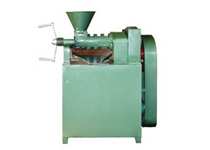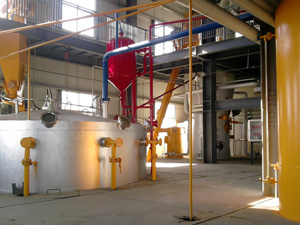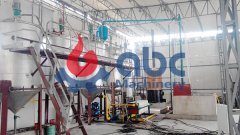1-5TPD Palm Oil Refining Equipment Price List
Reasons for palm oil refining
Crude palm oil is only a product of
oil pressing or
oil extraction. It contains harmful substances to consumers: some of these substances exist naturally, some are produced during production or storage, and these substances must be carefully removed for human consumption. Due to their different root causes,
palm oil refining should be carried out in several steps under different conditions.
1-5 tons/day palm oil refining process
Crude Palm Oil—Degumming—Deacidification—Decolorization—Deodorization—Refined palm oil
Palm oil refining step by step
-
Degumming is the first step in palm oil refining. Degumming process only includes the hydration of crude palm oil. Some impurities such as phospholipids, gums and proteins are dissolved in oil when they are anhydrous. Once they are hydrated, they cannot be dissolved in oil. This is the principle of degumming. However, some gums are still in oil after hydration, which needs to be removed by acidizing treatment.
-
The decolorization process uses appropriate adsorbents to remove pigments such as carotene and chlorophyll. Decolorization has become a more important process, which is the last step in removing residual phospholipids, metal ions and oxides before deodorization. In addition, removing other impurities is also important because it can directly affect the sensory flavor and oxidation characteristics of deodorized oil.
-
In most cases, deodorization is the last step in palm oil refining. Its main purpose is to remove the substances that affect the odor and taste of palm oil. In physical oil refining, it can also remove free acid. Despite the different types of technology, the goal is always one: to ensure that oil and steam are fully in contact and achieve the desired results.
If you are looking for
1-5TPD palm oil refining equipment, please don’t hesitate to contact us!





